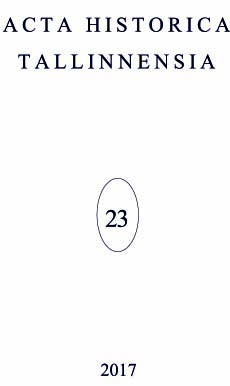LEMBITU. JUHTIMISKUNSTI MEISTRIKLASS VASTSEL MAARJAMAAL
LEMBITU OF LEOLE. MASTERFUL LEADERSHIP IN NASCENT MARY’S LAND
Author(s): Kristjan OADSubject(s): Christian Theology and Religion, History, 13th to 14th Centuries
Published by: Teaduste Akadeemia Kirjastus
Summary/Abstract: Scholarship of the past twenty-five years has to a great degree overturned the narratives provided by older works about the Christianisation of Estonia and Latvia in the early 13th century. In newer works, however, the focus has been mostly on newcomers to Livonia and not so much on the possible motives and ambitions of local nobles. This paper aims to contribute to the filling of this gap. The paper looks into the actions and possible motives of the Estonian nobleman Lembitu from northern Sakala. It appears that the name Vytamas appearing once in Henry’s Chronicle of Livonia was an epithet of Lembitu, as indicated by the position of Vytamas within Henry’s text as well as interpunctuation as given in the surviving manuscripts. Taking into account what is known about the dynamics of power and intra-elite relations in final Iron Age Estonia and analysing as a whole all bits of evidence about Lembitu’s actions, it can be surmised that he acted separately from the Sakalan nobility associated with the central stronghold of Viljandi, even taking a stance in opposition to them. The years-long conflicts with the Christians in Riga (1211–1217) seem to have been an undertaking of Lembitu and his immediate social circle; the Sakalans of Viljandi seem to have been Christians since 1211. In 1217 Lembitu gathered an army that comprised every fourth to every second able-bodied man from the large area of recruitment; in its own time such an endeavour had to be an outstanding achievement of leadership. However, there seems to be no grounds for the claim that political leaders of different regions of Estonia gathered in 1217. Rather, the gathered army was specifically Lembitu’s and made up of men wishing to join a raiding campaign led by him. The leitmotif of Lembitu’s actions seems to have been a drive towards ever greater prestige and power, and the various military campaigns Lembitu led against different adversaries seem to have been means to that end.
Journal: Acta Historica Tallinnensia
- Issue Year: 2017
- Issue No: 23
- Page Range: 26-48
- Page Count: 23
- Language: Estonian

